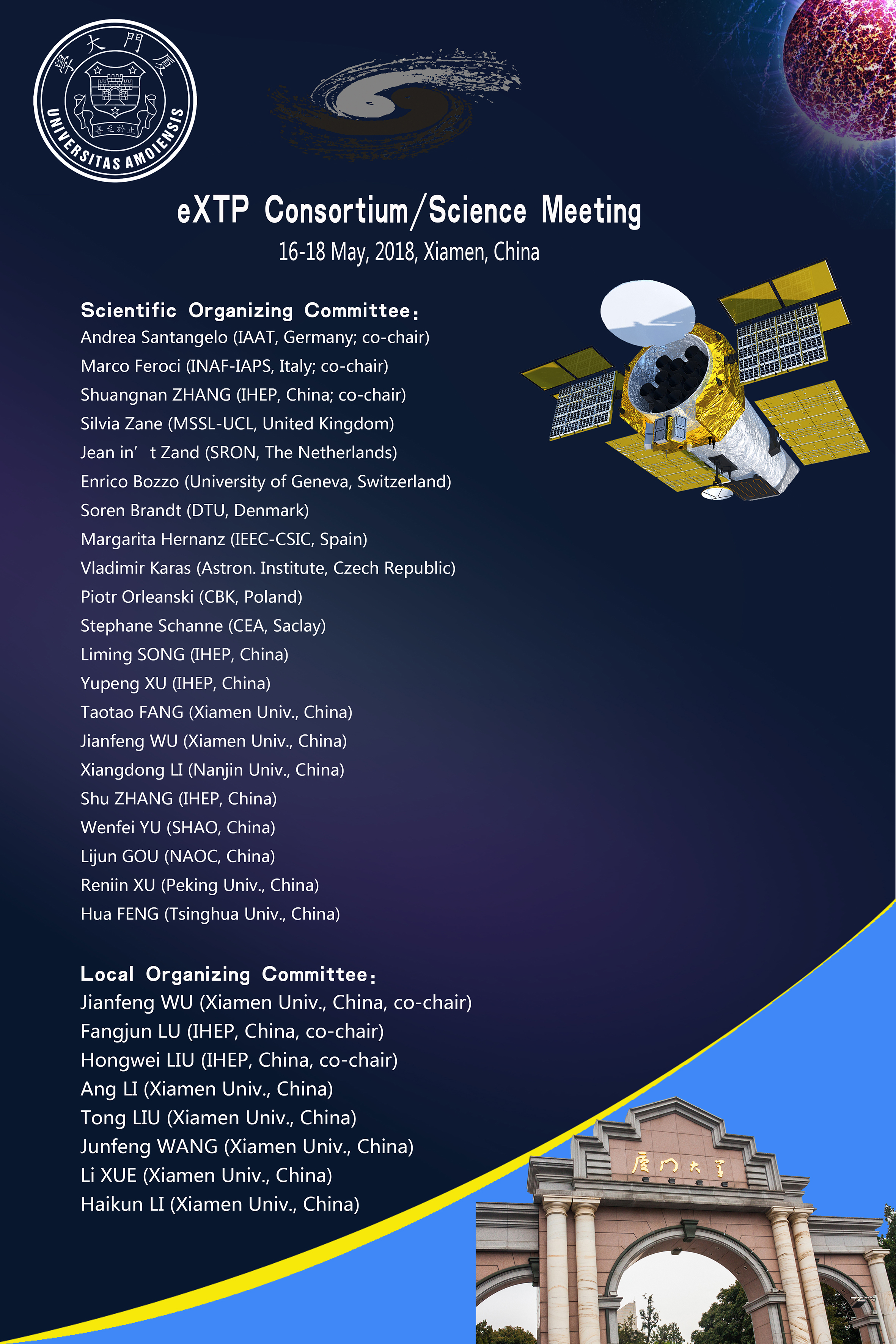
 The enhanced X-ray Timing and Polarimetry mission (eXTP) is a science mission designed to study the state of matter under extreme conditions of density, gravity and magnetism. Primary goals are the determination of the equation of state of matter at supra-nuclear density, the measurement of QED effects in highly magnetized star, and the study of accretion in the strong-field regime of gravity. Primary targets include isolated and binary neutron stars, strong magnetic field systems like magnetars, and stellar-mass and supermassive black holes.
The enhanced X-ray Timing and Polarimetry mission (eXTP) is a science mission designed to study the state of matter under extreme conditions of density, gravity and magnetism. Primary goals are the determination of the equation of state of matter at supra-nuclear density, the measurement of QED effects in highly magnetized star, and the study of accretion in the strong-field regime of gravity. Primary targets include isolated and binary neutron stars, strong magnetic field systems like magnetars, and stellar-mass and supermassive black holes.
The mission carries a unique and unprecedented suite of state-of-the-art scientific instruments enabling for the first time ever the simultaneous spectral-timing-polarimetry studies of cosmic sources in the energy range from 0.5-30 keV (and beyond). Key elements of the payload are: (1) the Spectroscopic Focusing Array (SFA); (2) the Large Area Detector (LAD); (3) the Polarimetry Focusing Array (PFA); (4) the Wide Field Monitor (WFM).
The eXTP international consortium includes major institutions of the Chinese Academy of Sciences and Universities in China, as well as major institutions in several European countries and other International partners. The predecessor of eXTP, the XTP mission concept, has been selected and funded as one of the so-called background missions in the Strategic Priority Space Science Program of the Chinese Academy of Sciences since 2011. The strong European participation has significantly enhanced the scientific capabilities of eXTP. The planned launch date of the mission is earlier than 2025.
Xiamen University, member of the eXTP Consortium, will hold a science meeting for eXTP in Xiamen, China, on May 16-18, 2018. The purpose of this meeting is to provide a platform for communications between eXTP participants from both China and Europe, to discuss the science goals of the mission.
. The Science White Paper of the eXTP mission;
. Progress of the key science payloads;
. Division of work between Consortium members;
. Launch vehicle and launch site;
. Science data center and ground stations.